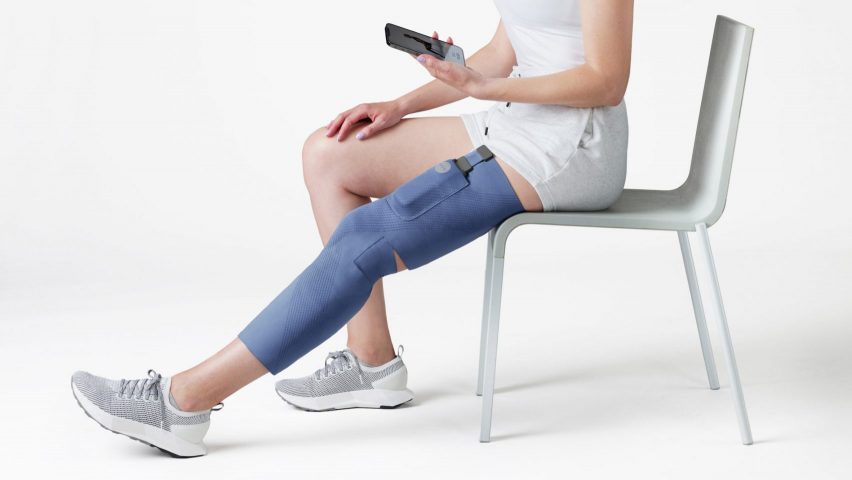
Cionic Neural Sleeve named best innovation as Dezeen Awards design winners revealed
Cionic Neural Sleeve has won Dezeen Awards 2023 design project of the year following the announcement of all nine design category winners, which were revealed at this evening's ceremony.
The nine winners awarded in Dezeen's annual awards programme are located in eight different countries including Sweden, New Zealand, USA and Spain.
Cionic Neural Sleeve crowned design project of the year
Cionic Neural Sleeve by Fuseproject in collaboration with Cionic won the prestigious design project of the year award, sponsored by Solus Ceramics and Mirage Spa. It was also named product design (health and wellbeing) project of the year.
According to the design master jury, the bionic leg product represents "a perfect marriage of science, technology and design".
"For the millions of people suffering from muscular degenerative diseases or injury, this product has the greatest potential to improve the user's ability to walk and therefore their quality of life," said the master jury.
"Working with sophisticated technologies, the Fuseprojects design studio has managed to conceal complex electronics into a slender product that wraps elegantly around the leg without an overly medical appearance."
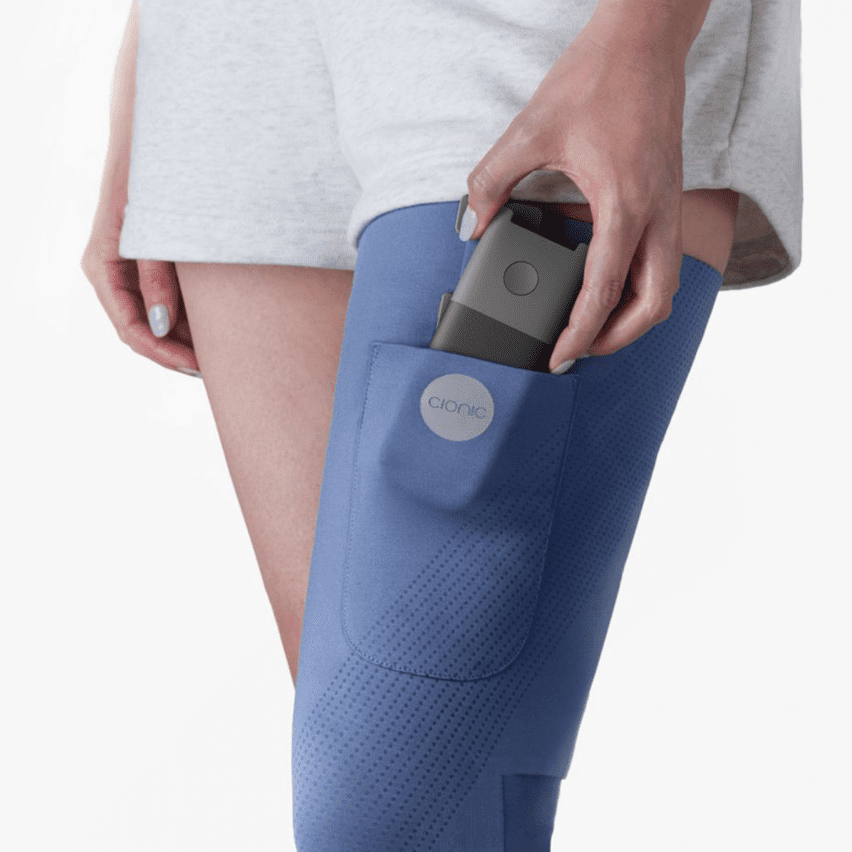
The bionic leg wrap was up against projects that included a stackable chair derived from castor bean plants, an adaptive sunglasses collection and a reflective hemispherical theatre for the French pavilion at this year's Venice Architecture Biennale.
View the winning design projects on the Dezeen Awards website or read below:
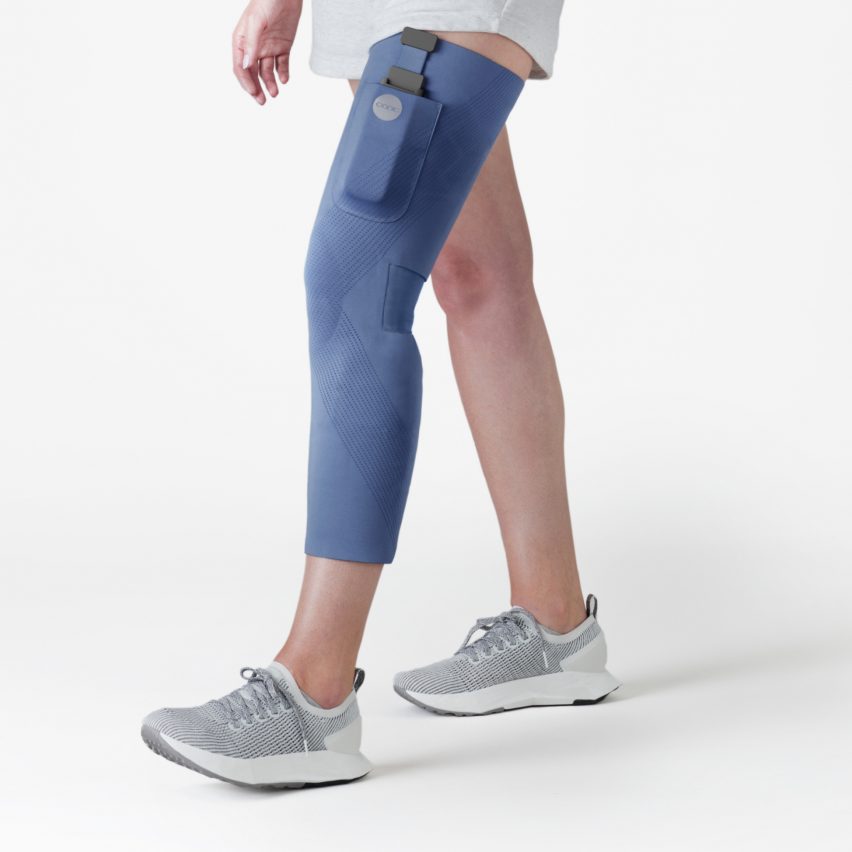
Design project of the year and product design (health and wellbeing): Cionic Neural Sleeve by Fuseproject in collaboration with Cionic
The winning design project of the year is a bionic leg sleeve by California start-up Cionic in collaboration with design studio Fuseproject. The lightweight Neural Sleeve wraps around the leg and uses electric pulses and artificial intelligence to correct muscle movements in people with limited mobility.
"The design doesn't have a medical appearance which helps to remove any stigma for the wearer," said the master jury.
"Clever integration of technology into a fabric which has the far-reaching possibility to vastly improve the quality of life for many."
Read more about Cionic Neural Sleeve by Fuseproject in collaboration with Cionic ›
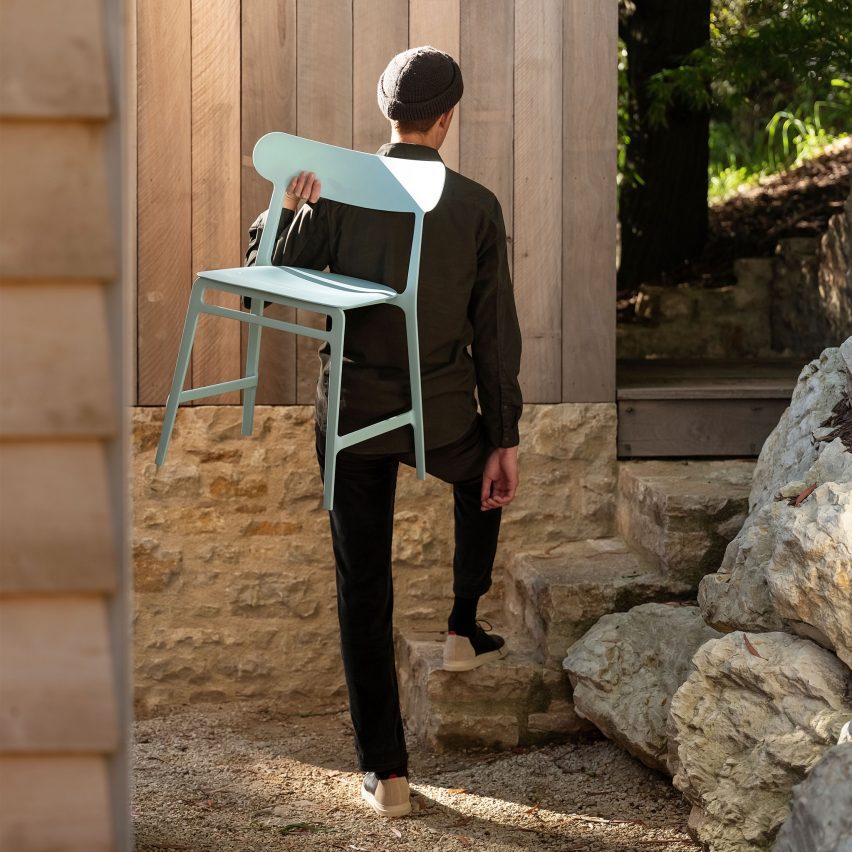
Furniture design of the year: Lightly by Formway for Noho
A lightweight, stackable chair designed by New Zealand-based Formway won furniture design of the year. Lightly is made from nylon derived from castor bean plants and recycled waste in an attempt to achieve a lower carbon footprint.
Available in five different colours, the chair has a curved back and contoured seat which can be easily stacked.
"Well constructed, lightweight and stackable chair with an elegant form,” said the master jury. "A chair for many environments, using a minimal amount of materials and avoiding too many composites to aid with recycling."
Read more about Lightly by Noho for Formway ›
Highly commended: Salvage Chair by Jay Sae Jung Oh
Seattle-based designer Jay Sae Jung Oh was highly commended for her chair made from discarded instruments wrapped in leather. Oh combined discarded instruments including two drums, a French horn and an electric guitar which were then covered with thin brown leather cords.
The Salvage Chair is part of an ongoing Salvage series that highlights waste culture.
"The tactile and undulating forms of this one-off design demonstrate the precision and care of the maker's skilled craftsmanship and give new value to forgotten objects," said the jury.
Read more about Salvage Chair by Jay Sae Jung Oh ›
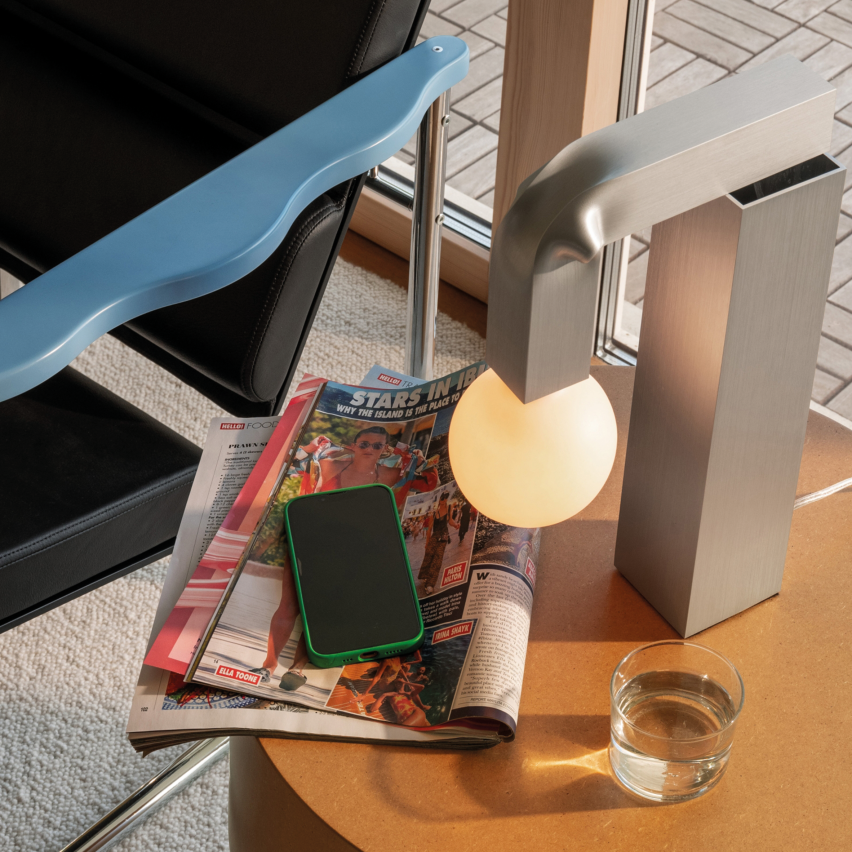
Lighting design of the year: Knuckle lights by David Taylor for Hem
David Taylor won lighting design of the year for his Knuckle collection made from recycled metal tubing. The collection includes table lamps and linear chandeliers which are made using a bending press – a machine tool for bending sheet and plate material – to create distinctive crimped corners.
"A light that is not overdesigned, that expresses the honesty of material in a single gesture, as well as visually celebrating the process of production," said the judges.
"It is a refreshing example of embracing the nature of direct and simple manufacturing without being precious."
Read more about Knuckle Lights by David Taylor for Hem ›
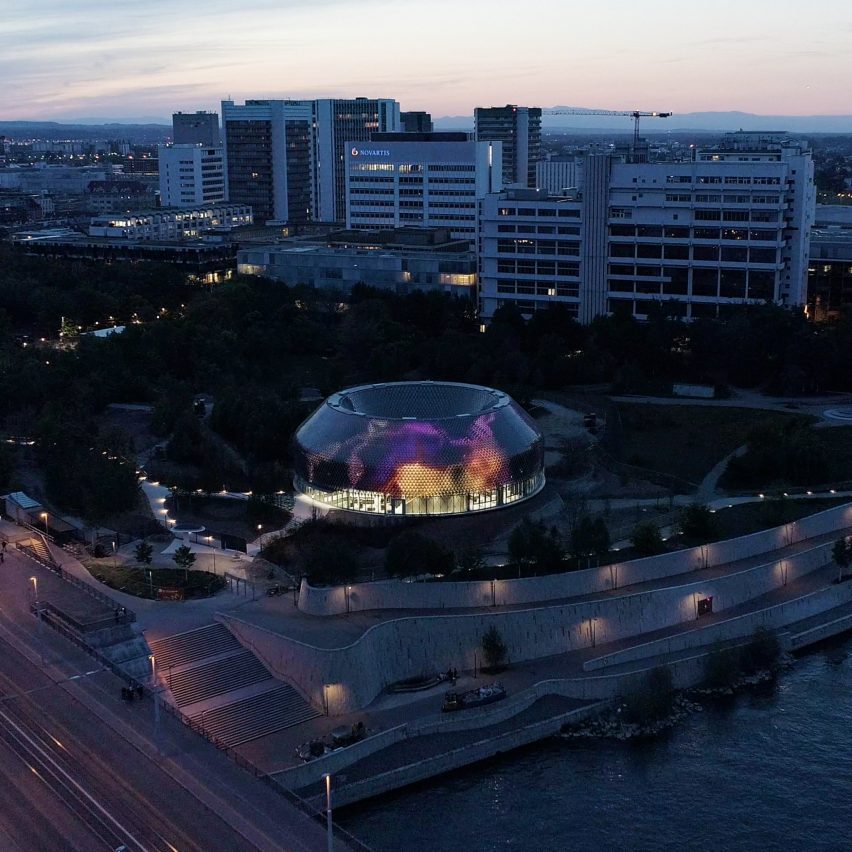
Architectural lighting design of the year: Novartis Pavillon Zero-Energy Media Facade by Iart
A pavilion wrapped in an energy-neutral media facade in Switzerland won architectural lighting design of the year. Located alongside the Rhine, the Novartis Pavillon has a communicative skin made from solar modules with embedded LEDs which reflect the artistic works displayed on the facade.
"This high level and innovative ‘skin' of light brings the building to life and allows it to constantly change and fluctuate in visual appearance," said the jury.
"This engaging and artistic use of light is powered only by integrated solar panels and requires no additional power which sets an example for future buildings."
Read more about Novartis Pavillon Zero-Energy Media Facade by Iart ›
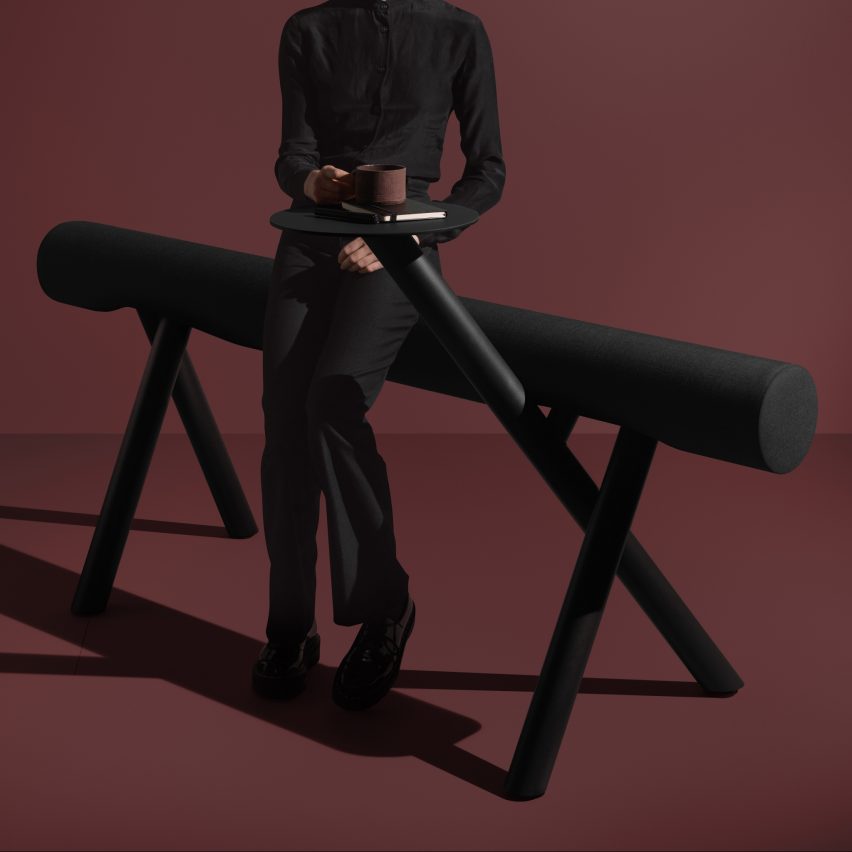
Workplace design of the year: Lumber by Mizetto
A minimalist log-like seat designed for perching manufactured by Swedish firm Mizetto won workplace design of the year. Lumber was developed from the idea of the mobile office and responds to the increased amount of time people spend in waiting areas such as cafes, schools and offices.
"This furniture collection proposes a new typology for the workplace as well as other public spaces," said the master jury.
"The 'positively lightweight' design is stripped of unnecessary details yet remains flexible and versatile in its applications."
Read more about Lumber by Mizetto ›
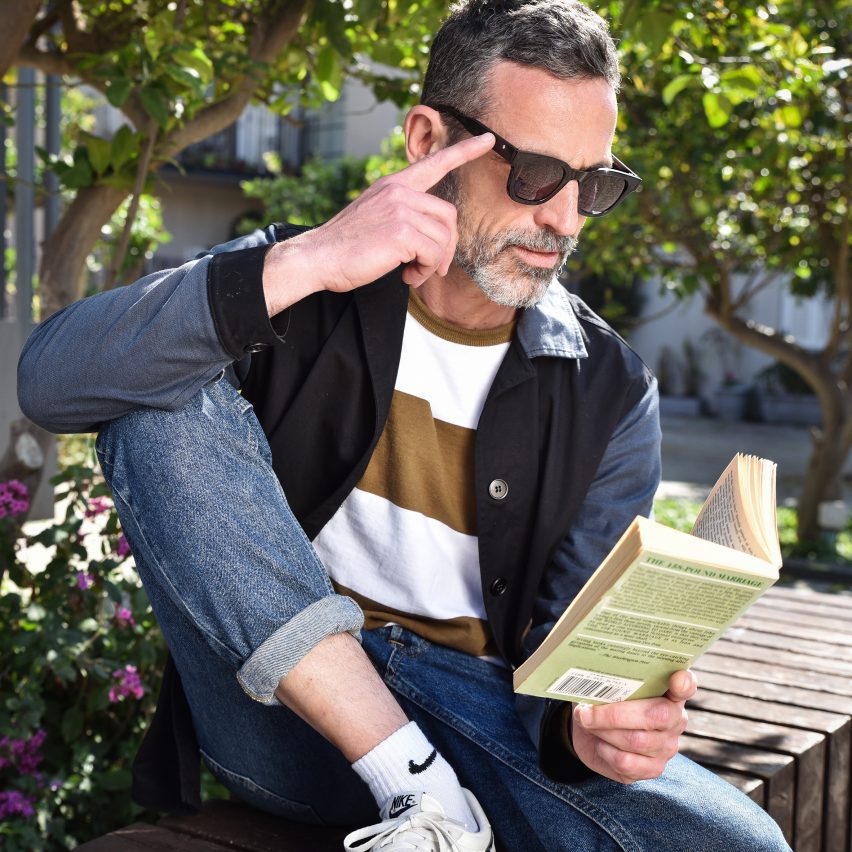
Product design (consumer and wearables) of the year: 32°N Sunglasses by Deep Optics
Sunglasses with changeable eyewear by technology company DeepOptics won product design (consumer and wearables) of the year. The adaptive focus sunglasses use pixelated liquid crystal (LC) lenses which with a quick swipe change the optical properties of the glasses – avoiding the need to switch between distance to reading glasses.
According to the judges, this "revolutionary technology" exhibits significant potential for the future of those with sight impairment.
"A seemingly simple integration of advanced technologies to correct the user's vision," said the jury. "Hardware can be updated to change with the user's prescription."
Read more about 32°N Sunglasses by Deep Optics ›
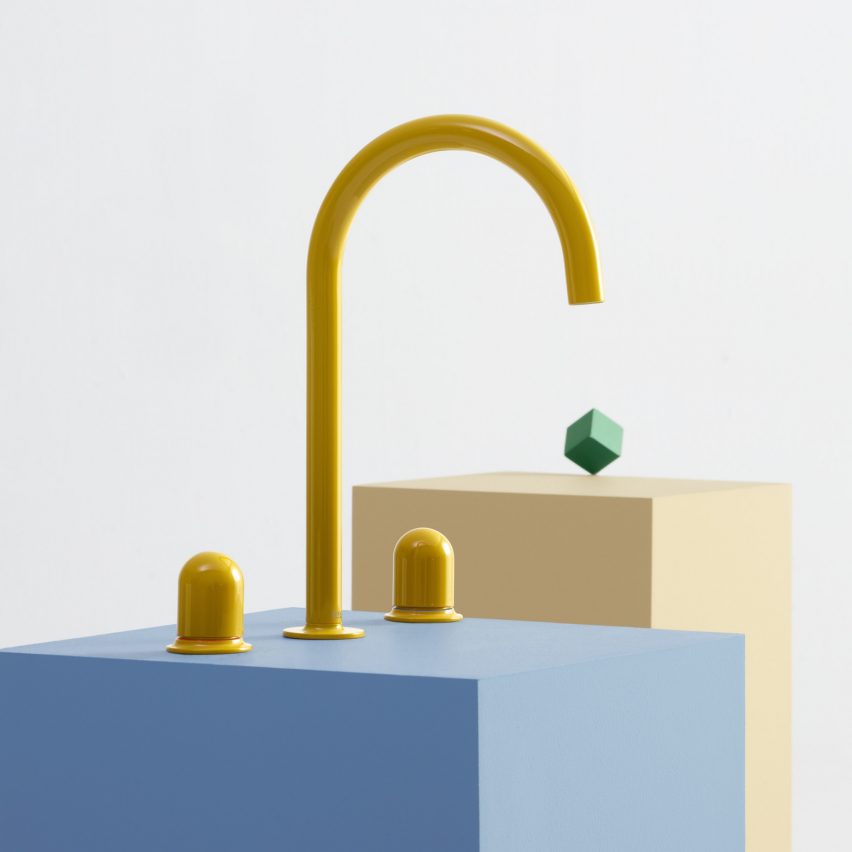
Product design (bathroom and kitchen) of the year: Nu by Studio Inma Bermúdez for Roca
A playful tap collection featuring vibrant Mediterranean colours by Spanish firm Studio Inma Bermúdez won product design (bathroom and kitchen) of the year.
The Nu tap collection has hidden "smiling faces" that are evident when the taps are turned on and are manufactured in six colours including green, blue, yellow, black, white and chrome.
"Daring and impactful colour use on a refined tap design," said the judges. "Elegant and timeless aesthetic for a contemporary setting. Playful yet minimalistic for everyday needs."
Read more about Nu by Studio Inma Bermúdez for Roca ›
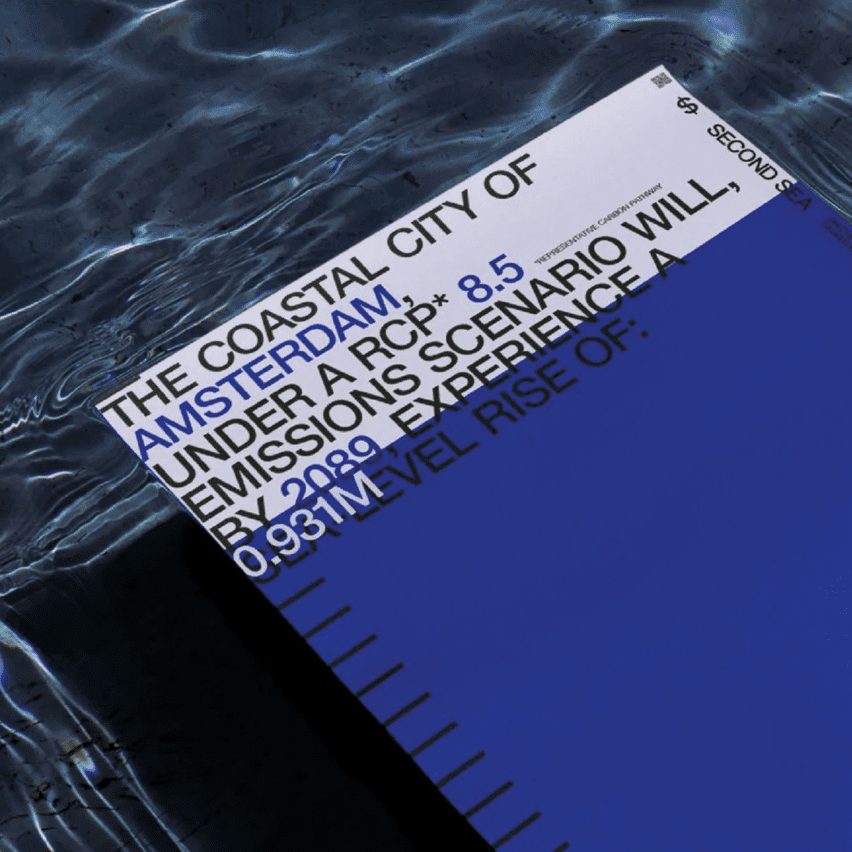
Graphic design of the year: Second Sea by Accept & Proceed
A calculator using real-world data to predict how sea level rise won graphic design of the year. The Second Sea calculator uses data from 136 cities to calculate how much coastal cities are owed in climate reparations.
An invoice is generated through the app to show the estimated cost of the resulting damages, which users can share on social media.
"A visually appealing campaign which communicates complex statistics with a clear and accessible message," said the judges.
"The graphic language carries well across a variety of media, including digital and print with a potential for lasting impact."
Read more about Second Sea by Accept & Proceed ›
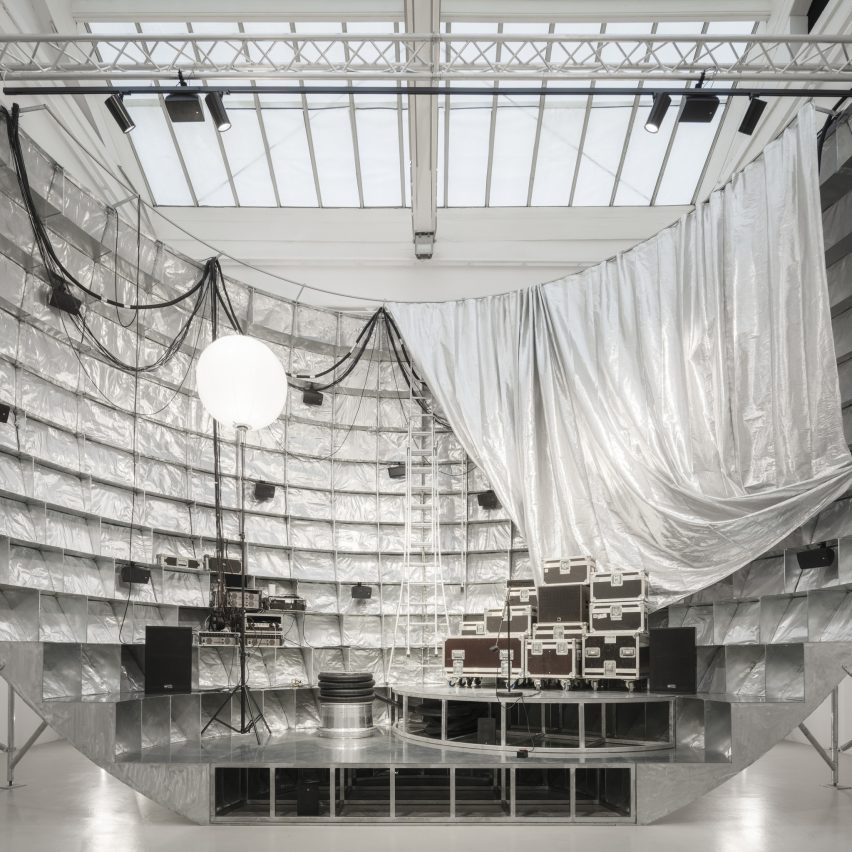
Installation design of the year: Ball Theater, French Pavilion, Venice Biennale by Muoto
The metallic Ball Theater designed by architecture studio Muoto won installation design of the year. The aluminium globe-shaped stage was designed to resemble a mirror ball and offer visitors a space to imagine a more utopian future.
The design master jury described the project as a "French punk statement" given its expressive materials.
"A fun installation that reconfigures the dynamism of the room with an intriguing roughness to the structure, using raw materials honestly and effectively," said the judges.
Read more about Ball Theater, French Pavilion, Venice Biennale by Muoto ›
Dezeen Awards 2023
Dezeen Awards celebrates the world's best architecture, interiors and design. Now in its sixth year, it has become the ultimate accolade for architects and designers across the globe. The annual awards are in partnership with Bentley Motors, as part of a wider collaboration that will see the brand work with Dezeen to support and inspire the next generation of design talent.

